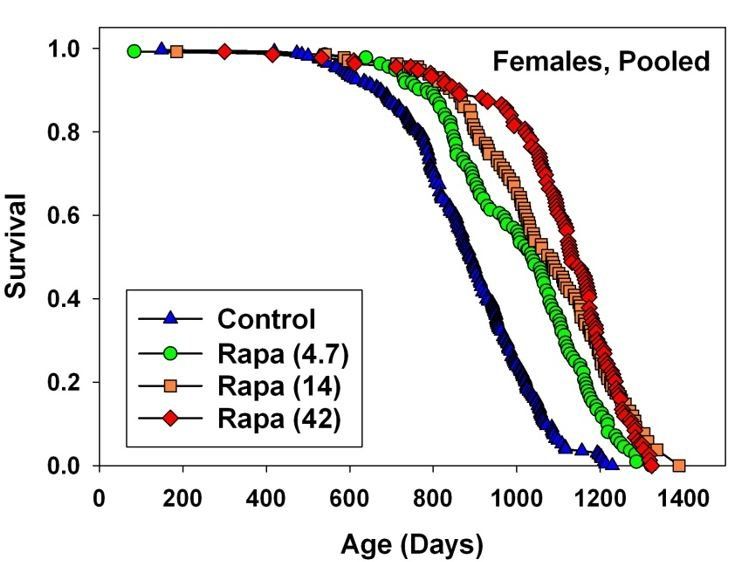The National Institute on Aging sponsors the multi-institutional “Interventions Testing Program,”or ITP, to evaluate agents, such as drugs or nutriceuticals, that might slow aging and extend healthy lifespan in mice. The initial protocol focused on lifespan as the key endpoint. Agents that pass this screen are then evaluated in follow-up studies that include a wide range of age-sensitive tests, mid-life pathology, and ideas about mechanism of effect. More information about the program can be found here,
including a list of drugs tested or in progress, links to tissues that can be provided for collaborations, and information about how to propose an intervention. Published work has documented major benefits from treatment with rapamycin, acarbose (males > females), and 17a-estradiol (males only), and smaller but significant benefits from three other agents (NDGA, Protandim, glycine).
The demonstration that drugs can slow aging and extend healthy lifespan in mammals
has four key implications:
- it refutes definitively the idea that aging is too complex to be altered by simple interventions
- it provides clues about the cellular and physiological pathways that modulate the aging rate and multiple disease risks in mammals
- it provides new tools – in addition to dietary restriction and single gene mutants – for testing ideas about the biology of aging, and
- it provides motivation and guidance for future development of anti-aging drugs that might work in people.
- Use of genetically heterogeneous mice, in which each mouse is genetically unique, to reduce the chance that the effects seen depend on the idiosyncrasies of any particular inbred or F1 hybrid genotype
- Simultaneous testing at three sites (Michigan, Bar Harbor, Texas) to see to what extent results are replicable or, in some cases, site-specific
- Interventions can be suggested by anyone, including academic scientists and those working for commercial organizations. Further details at this link.
- Tissues from each drug tested (from 2014 onward) are collected from mice at 22 months of age and stored frozen, to be shared with scientists who wish to study these in their own labs. Further details at this link.




